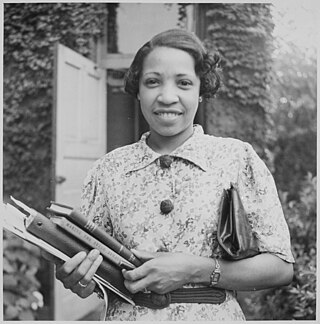
Lois Mailou Jones (1905–1998) was an artist and educator. Her work can be found in the collections of the Smithsonian American Art Museum, The Metropolitan Museum of Art, the National Museum of Women in the Arts, the Brooklyn Museum, the Museum of Fine Arts, Boston, Muscarelle Museum of Art, and The Phillips Collection. She is often associated with the Harlem Renaissance.

Joseph Rodefer DeCamp was an American painter and educator.
Elizabeth Orton Jones was an American illustrator and writer of children's books. She won the 1945 Caldecott Medal for U.S. picture book illustration, recognizing Prayer for a Child, after being a runner-up one year earlier.

James Henry Daugherty was an American modernist painter, muralist, children's book author and illustrator.
Dorothy Pulis Lathrop was an American writer and illustrator of children's books.
Ruth Van Sickle Ford was an American painter, art teacher, and owner of the Chicago Academy of Fine Arts. She credited artists George Bellows, who influenced her interest in social realism, and John Carlson, who founded the School of Landscape Painting in Woodstock, New York, with helping her to develop her talent. She traveled and made paintings in the United States, Caribbean and South America. An award-winner, her works are in many permanent public and private collections. A book has been written about her entitled Warm Light, Cool Shadows: The Life and Art of Ruth Van Sickle Ford.
Helen Amanda Loggie was a U.S. artist, primarily known for her etchings of trees and coastlines of the Pacific Northwest.
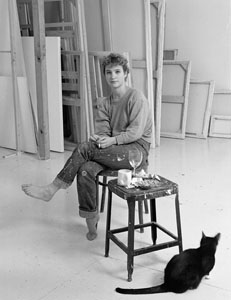
Louisa Lizbeth Chase was an American neo-expressionist painter and printmaker.
Mary Buff and Conrad Buff II were married creators of illustrated children's books. Between 1937 and 1968, they collaborated on both text and illustrations to produce 14 books; four times they were a runner-up for the Caldecott Medal or Newbery Medal. They had a profound impact on children's literature in the middle of the 20th century.
Robert Philipp was an American painter influenced by Impressionism and Post-Impressionism, and known for his nudes, still lifes, and portraits of attractive women and Hollywood stars. Noted art critic Henry McBride called Philipp one of America's top six painters of his generation. He was an instructor of painting at the Art Students League of New York for 33 years, the American artist Itshak Holtz was a student of Philipp. Philipp was Secretary of the National Academy of Design, and National Academician, Benjamin Franklin Fellow, Royal Society of Arts in London. He was married to model and fellow artist Rochelle ("Shelly") Post, who frequently posed for him until her death in 1971. His compositions and painting style have been compared to the art of Edgar Degas and Pierre-Auguste Renoir. Philipp won prizes in most of the important exhibitions of his time, and his paintings are in numerous museums and important private collections.

Elizabeth Okie Paxton (1878–1972) was an American painter, married to another artist William McGregor Paxton (1869–1941). The Paxtons were part of the Boston School, a prominent group of artists known for works of beautiful interiors, landscapes, and portraits of their wealthy patrons. Her paintings were widely exhibited and sold well.
Hildegard Woodward was the author and illustrator of many children's books, two of which were awarded a Caldecott Honor. Woodward's art was not restricted to children's books; her portfolio includes numerous works of fiction and humor for adults. Although most noted for her watercolor illustrations, she painted in oil and was a children's portrait artist.
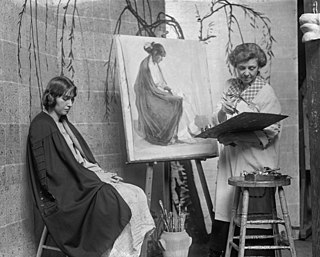
CatharineCarter Critcher was an American painter. A native of Westmoreland County, Virginia, she worked in Paris and Washington, D.C. before becoming, in 1924, a member of the Taos Society of Artists, the only woman ever elected to that body. She was a long time member of the Arts Club of Washington.
Rebecca Salsbury James (1891–1968) was a self-taught American painter, born in London, England of American parents who were traveling with the Buffalo Bill Wild West Show. She settled in New York City, where she married photographer Paul Strand. Following her divorce from Strand, James moved to Taos, New Mexico where she fell in with a group that included Mabel Dodge Luhan, Dorothy Brett, and Frieda Lawrence. In 1937 she married William James, a businessman from Denver, Colorado who was then operating the Kit Carson Trading Company in Taos. She remained in Taos until her death in 1968.
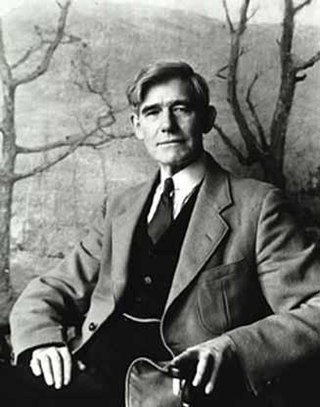
Chauncey Foster Ryder was an early 20th century American Postimpressionist landscape painter known for a green-gray palette termed 'Ryder green'.

Walter Elmer Schofield was an American Impressionist landscape and marine painter. Although he never lived in New Hope or Bucks County, Schofield is regarded as one of the Pennsylvania Impressionists.
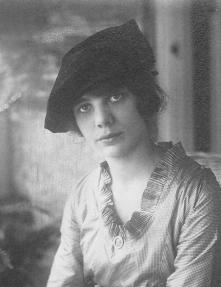
Grace Thorp Gemberling was an American artist known for the broad range of her subjects in paintings having a pronounced psychological as well as aesthetic impact. One critic said they conveyed a mood that was "ethereal, bold and engaged". Another said her work showed "a disciplined hand and a romantic eye" together with "a magical color sense". Known for her control of detail and successful handling of line and blocks of color, she was said to paint in a modernist style that stayed clear of abstraction and was remembered by a teacher and fellow artist as "the finest woman painter in Philadelphia during the 1920s and 1930s".
Carole Marie Byard was an American visual artist, illustrator, and photographer. She was an award-winning illustrator of children's books, and the recipient of a Caldecott Honor, as well as multiple Coretta Scott King Awards.

Edmund Archer (1904–1986) was an American artist best known for his portraits of African Americans. He was born in Richmond, Virginia, to parents who were both culturally and socially prominent in that city. Having taken an early interest in painting, he took art classes continually from childhood into his adult years. His long career included periods spent in Richmond, Paris, New York, and Washington, D.C. In addition to painting, he served as an assistant curator at the Whitney Museum of American Art and an instructor at the Corcoran School of Art. His portrait style tended toward a poster-like flatness early in his career and later toward a more traditional modeled style. He painted with a high degree of realism throughout his career and rarely experimented with any degree of abstraction. Galleries and museums gave him frequent exhibitions and both individual and institutional collectors provided him with income from sales. In 1938, a critic said he was then considered to be "one of the best of the young artists in the United States". A few months later, another critic credited his success to hard work: "Edmund Minor Archer has had advantages. His success story is no Horatio Alger tale. It is a story of an earnest and deeply talented artist who has worked and studied in humility and devotion, and has early reached the top, hard step by hard step".

Mary Orwen (1913–2005) was an American artist known for paintings that appeared to be completely abstract but were usually inspired by objects in the natural world. Her goal, as she put it, was to "find an echo in the visible world of the order which I feel exists beneath the complexity of life." She spent much of her career painting and teaching art in and around Washington, D.C., and was a principal co-founder of an artists' cooperative called Jefferson Place Gallery, that one critic called "a gallery for serious creative work of progressive character" and that Orwen said would demonstrate that the city was not just a provincial backwater.











